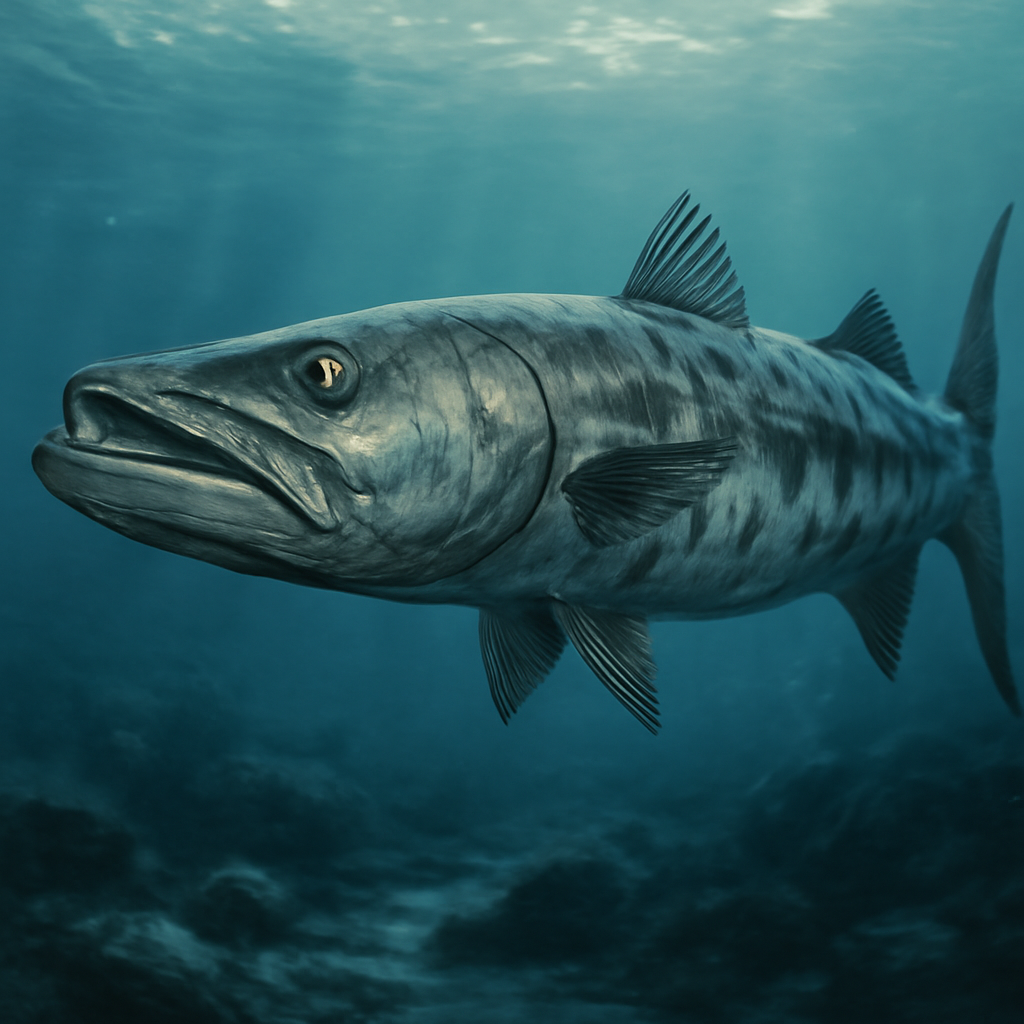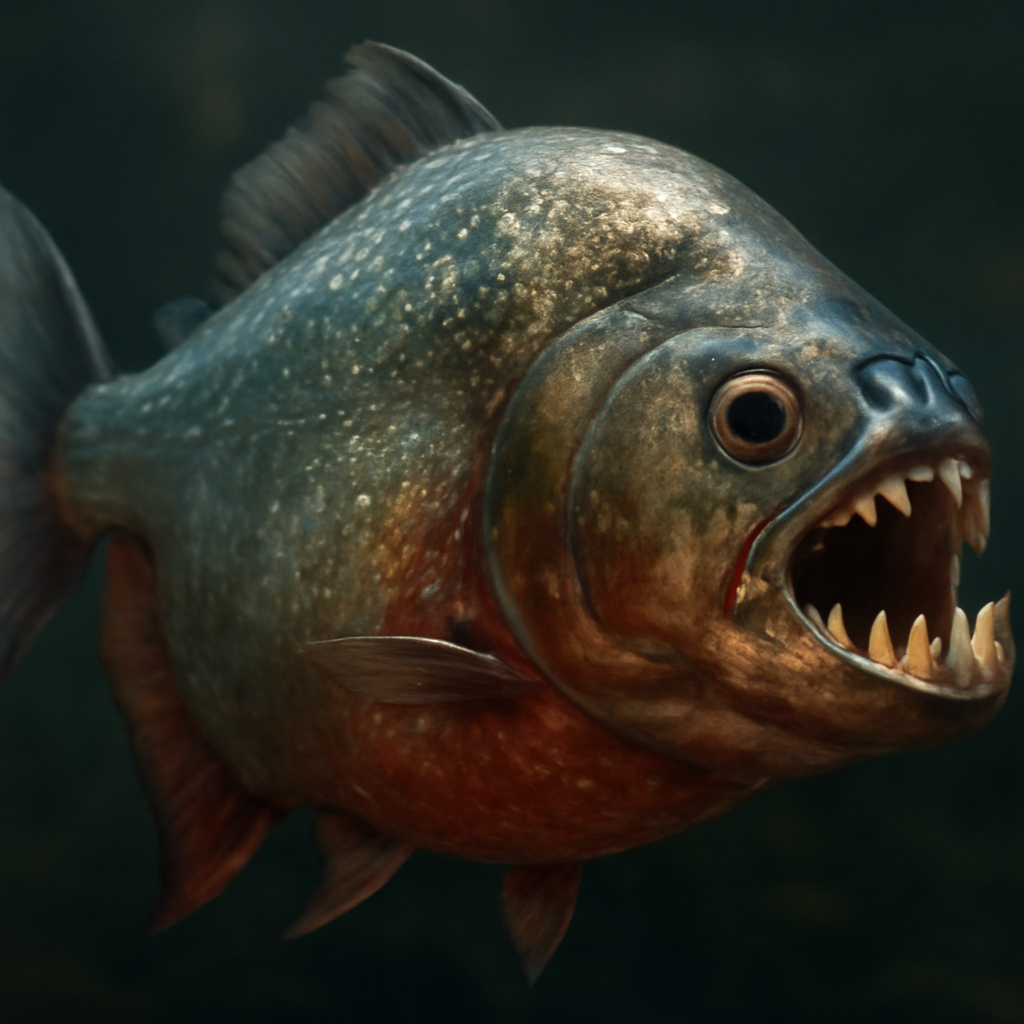Key Takeaways
- Both Barracuda and Piranha are aggressive predators but differ greatly in size and hunting techniques.
- Barracudas are known for their powerful, elongated bodies and swift, long-distance chases.
- Piranhas are smaller, pack-oriented fish with razor-sharp teeth that rely on group attacks for feeding.
- Habitat preferences vary: Barracudas inhabit open waters, while Piranhas prefer freshwater rivers and lakes.
- Dietary habits reflect their environments, with Barracudas preying on larger fish and Piranhas scavenging or hunting in groups.

What is Barracuda?
The Barracuda is a large, predatory fish recognized by its sleek, torpedo-shaped body. It are found in warm coastal waters across the Atlantic, Pacific, and Indian Oceans.
Physical Characteristics
These fish can grow up to 6 feet long, with a pointed snout and a mouth full of sharp, needle-like teeth. Their silver-gray coloration helps them blend into the open water.
Hunting Strategies
Barracudas rely on swift bursts of speed to ambush prey, often stalking from below before striking. They prefer chasing down fish that swim too close.
Habitat and Range
They inhabit coral reefs, rocky outcrops, and open seas, favoring areas with plenty of cover. They are highly territorial, defending their hunting grounds fiercely,
Diet and Feeding Habits
Preying mainly on smaller fish, they use their keen eyesight and quick reflexes to catch prey mid-swim. Occasionally, they scavenge dead fish or other marine creatures.
Behavioral Traits
Known for their aggressive nature, Barracudas can be unpredictable, sometimes attacking when provoked or startled. Although incomplete. They are solitary hunters, rarely forming groups.
Reproduction and Lifespan
They reproduce by releasing eggs into the water, with spawning occurring in shallow reefs. Their lifespan can reach up to 14 years in the wild.

What is Piranha?
Piranhas are small to medium-sized freshwater fish famous for their sharp teeth and feeding frenzies. They inhabit rivers, lakes, and floodplains in South America,
Physical Characteristics
Typically measuring between 6 to 14 inches, Piranhas have a robust body, a strong jaw, and a set of razor-sharp teeth arranged in a distinctive pattern. Their coloration varies from silver to reddish hues.
Hunting and Feeding Behavior
They often hunt in groups, attacking prey with rapid bites, especially when food is scarce. Their diet includes fish, insects, and sometimes plant matter.
Habitat Preferences
Piranhas favor slow-moving rivers and lakes with dense vegetation, which provide cover and breeding grounds. They thrive in murky waters with abundant food sources.
Diet and Social Dynamics
While some species scavenge, others are active predators, using pack tactics for hunting. Social hierarchy influences feeding order within groups.
Reproductive Cycle
Spawning occurs during the rainy season, with females laying eggs on submerged vegetation. They tend to guard their nests, sometimes aggressively defending them,
Behavioral Traits
Piranhas are often misunderstood as relentless killers, but many species are quite shy. Although incomplete. Their aggressive reputation are mostly linked to feeding frenzies under specific conditions,
Comparison Table
Here’s a side-by-side comparison of Barracuda and Piranha across various aspects:
| Parameter of Comparison | Barracuda | Piranha |
|---|---|---|
| Size Range | Up to 6 feet long, heavy-bodied | 6 to 14 inches long, stocky build |
| Habitat | Open coastal waters, coral reefs | Freshwater rivers, lakes, floodplains |
| Diet | Large fish, small marine creatures | Fish, insects, sometimes plants |
| Hunting Style | Speedy ambush and pursuit | Pack attacks and quick bites |
| Teeth Structure | Long, sharp, needle-like | Razor-sharp, triangular |
| Social Behavior | Mostly solitary | Group-oriented, social hunting |
| Reproduction | Eggs released in shallow waters | Eggs laid on submerged vegetation |
| Growth Rate | Relatively fast, up to 14 years lifespan | Slower, lifespan varies by species |
| Defense Mechanism | Speed and agility, sharp teeth | Pack defense and sharp teeth |
| Predatory Impact | Top of local fish predation | Group attacks can decimate prey |
Key Differences
Below are some clear distinctions that separate Barracuda from Piranha:
- Habitat Environment — Barracudas prefer saltwater environments, while Piranhas are exclusive to freshwater habitats.
- Size and Build — Barracudas are significantly larger, with elongated bodies, contrasting with the stocky, smaller Piranhas.
- Feeding Group Dynamics — Piranhas hunt in groups, whereas Barracudas hunt alone or in small numbers.
- Teeth Morphology — Barracudas have needle-like teeth for slicing, while Piranhas possess triangular, razor-sharp teeth for biting.
- Behavioral Tendencies — Barracudas are solitary predators; Piranhas are social, often attacking in packs.
- Diet Focus — Barracudas mainly hunt larger fish, whereas Piranhas often scavenge or hunt smaller prey in groups.
- Reproduction Sites — Barracudas spawn in open waters, while Piranhas prefer nesting on submerged vegetation.
FAQs
Are there any misconceptions about their aggressiveness?
Many believe both are constantly dangerous, but Barracudas and Piranhas usually attack only when threatened or provoked, not randomly aggressive.
Can Piranhas attack humans?
While rare, Piranhas have bitten humans, often during times of food scarcity or when defending territory, but fatal attacks are uncommon.
Do Barracudas pose a threat to larger marine animals?
Generally, Barracudas prey on smaller fish, but in rare cases, they may nip at divers or larger animals if provoked or hungry.
How do their reproductive behaviors differ in terms of parental care?
Barracudas release eggs into the water with no parental involvement, while Piranhas sometimes guard their nests for a short period post-spawning.